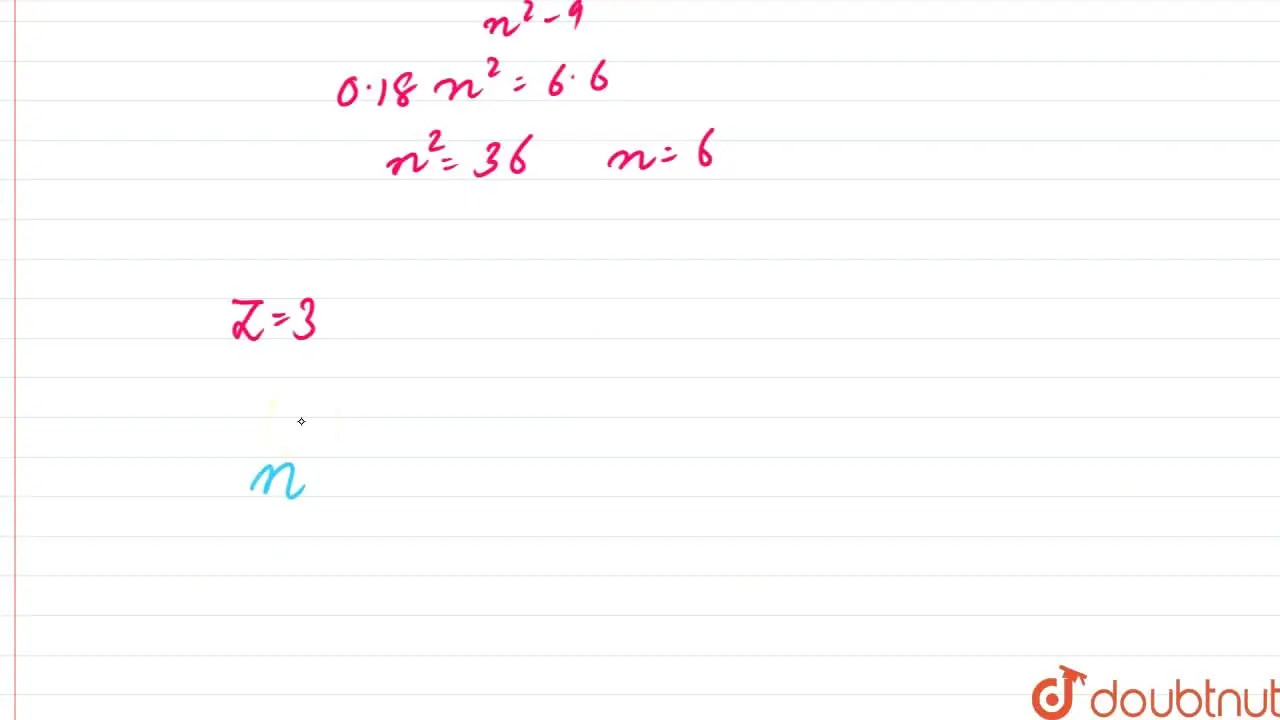A hydrogen like atom (atomic number ) is in a higher excited state of quantum number . This excited atom can make a transition to the first excited state by successively emitting two photons of energies and respectively. Alternatively the atom from the same excited state can make a transition to the second excited state by successively emitting 2 photons of energy and respectively. Determine the value of
The correct Answer is:9
Total energy liberated during tranition of electron from nth shell to first excited state, (i.e., 2nd shell)
erg
...(i)
Similarly, total energy liberated during transition of electron from nth shell to second excited state, (i.e., 3rd shell)
erg
...(ii)
Dividing Equations (i) by (ii)
On substituting the value of n in Equations (i) or (i)
So,
Related Playlists
- BOOK - RESONANCE ENGLISHCHAPTER - NUCLEAR CHEMISTRYEXERCISE - PART-III5videos
NUCLEAR CHEMISTRY
- BOOK - RESONANCE ENGLISHCHAPTER - NUCLEAR CHEMISTRYEXERCISE - STAGE-II1videos
NUCLEAR CHEMISTRY
- BOOK - RESONANCE ENGLISHCHAPTER - NUCLEAR CHEMISTRYEXERCISE - ADVANCED LEVEL PROBLEMS30videos
NUCLEAR CHEMISTRY
- BOOK - RESONANCE ENGLISHCHAPTER - NITROGEN CONTAINING COMPOUNDSEXERCISE - ORGANIC CHEMISTRY(Nitrogen containing Compounds)30videos
NITROGEN CONTAINING COMPOUNDS
- BOOK - RESONANCE ENGLISHCHAPTER - P BLOCK ELEMENTSEXERCISE - PART -II23videos
P BLOCK ELEMENTS
Similar Questions
A hydrogen like atom (atomic number Z) is in a higher excited state of quantum number n. The excited atom can make a transition ot the first excited state by successively emitting two photons of energy 10.2 eV and 17.0 eV, respectively. Alternatively, the atom from the same excited state can make a transition to the second excited state by successively emitting two photons of energies 4.25 eV and 5.95 eV, respectivley Determine the values of n and Z. (lonization energy of H-atom = 13.6 eV)
View SolutionA hydrogen like species (atomic number Z) is present in a higher excited state of quantum number n. This excited atom can make a transitionn to the first excited state by successive emission of two photons of energies 10.20 eV and 17.0 eV respectively. Altetnatively, the atom from the same excited state can make a transition to the second excited state by successive of two photons of energy 4.25 eV and 5.95 eVv respectively. Determine the value of Z.
View SolutionA hydrogen like atom (atomic number Z) is in a higher excited satte of quantum number n .This excited atom can make a transition to the first excited state by succesively emitting two photon of energies 10.20eV and 17.00eV .Alternatively, the atom from the same excited state can make a transition to the second excited state by successively emitting twio photon of energy 4.25ev and 5.95eV Determine the followings:
The atom during transition from n=1 to n=2 emit radiation in the region ofView SolutionWhen a hydrogen atom is excited from ground state to first excited state, then
View SolutionEnergy of H-atom in the ground state is -13.6 eV, hence energy in the second excited state is
View SolutionThe energy of an atom or ion in the first excited state is -13.6 eV. It may be
View SolutionA hydrogen atom ia in excited state of principal quantum number n . It emits a photon of wavelength λ when it returnesto the ground state. The value of n is
View Solutionthe energy required to excite an electron in hydrogen atom to its first excited state is
View SolutionThe ground state and first excited state energies of hydrogen atom are −13.6eV and −3.4eV respectively. If potential energy in ground state is taken to be zero. Then:
View SolutionA hydrogen like atom of atomic number Z is in an excited state of quantum number 2n. It can emit a maximum energy photon of 204 eV. If it makes a transition to quantum state n, a photon of energy 40.8 eV is emitted. Find n, Z and the ground state energy (in eV) of this atom. Also calculate the minimum energy(eV) that can be emitted by this atom during de - excitation. Ground state energy of hydrogen atom is -13.6 eV
View Solution


